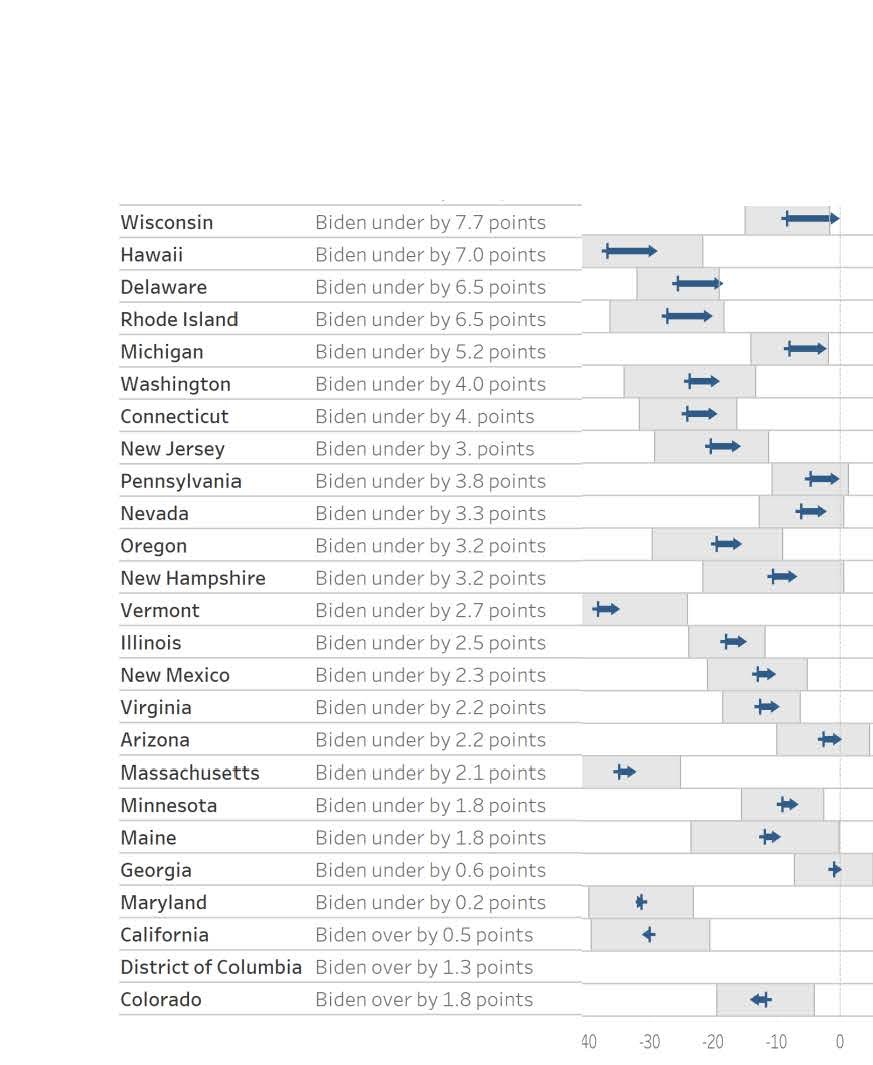How bad were the polls?
November 13, 2020 By Ira Skop and Alan SalzbergBiden squeaked by when it looked like it was going to be a landslide. As I said pre-election, there are a number of sources of error in election polls, which means they are always wrong (see this blog: https://salthillstatistics.com/posts/88 ).
Ira Skop pulled together all the data for this year's election predictions (polls from 538) and the final results (from the NY Times). The result? In the 25 states (plus DC) Biden was predicted to win, polls were off by a median of 1.6%. In the 23 states Trump was predicted to win, polls were off by a median of 3.5%. Furthermore, the spread of error varied little between states (never worse than 6% in favor of Trump or 1% in favor of Biden, and usually much closer to the median).
This doesn't seem terrible. Furthermore, Biden only lost two states, Florida and NC, that he was favored to win, and both of those were essentially toss-ups, with Biden predicted to take Florida with 51% (he got 48%) and predicted to take NC with 50.9% (he got 49.3%). Keep in mind, though, that the margin is double the percentage error, so if Biden was supposed to get 51% and he gets 48, that 3% difference translates to a 6% margin difference (51-49 versus 48-52).
So the polls were close, generally within a couple percent, and not off by more in close races. The states with the ten biggest differences were states where Biden was only predicted to get in the mid-40s or less (Wisconsin had the 11th biggest difference, of 4%, meaning an 8% swing). Still, Wisconsin was the only close race that was polled with a margin of more than 5%.
So why does it seem so bad? I think there are a couple of reasons.
1) With so many close states, the small error meant the difference between an expected landslide and a nail-biter, made even more of a nail-biter with the slow counting of mail-in votes and Trump's refusal to concede.
2) The bias was very consistently against Biden. Only in MD, DC, CA, and CO was the error in Biden's favor, with Colorado having the largest error favorable to Biden at a mere 1%. Contrast that to North Dakota's, with the largest error in favor of Trump (6%).
Note that the bias was very similar to the 2016 bias, meaning everyone is asking why pollsters didn't fix this in four years. My guess is though the bias may be about the same, it exists for a different set of reasons, which the pollsters will be staring at their navels about until the next election, when the polls will be off for a different reason.
Finally, below is a graph showing the margin (remember, that is double the error associated with either Biden's or Trumps percentage) for every state Biden won (thanks again to Ira Skop for this one, which I hacked up a little).
